Given just how many herbs are used in the kitchen today, you may be wondering what all the differences are between chives vs. scallions. How do these two onion varieties compare to each other, and in what ways are they different, especially when you consider that scallions are the same as green onions?
In this article, we will compare and contrast chives and scallions so that you can fully understand the differences between these two. We will go over what they look like, what they taste like, and all of the ways in which they are used. If you are branching out in your home kitchen and want to try something new, let’s get started and discuss what chives and scallions are best used for now!
Comparing Chives vs Scallions

| Chives | Scallions | |
|---|---|---|
| Classification | Allium schoenoprasum | Allium fistulosum |
| Description | Grasslike in appearance, composed of many small shoots or blades of herb from a single, slender bulb. Flowers are purple to white in color, with multiple petals. Shoots are hollow and grow up to 20 inches tall | Long shoots grow from single bulbs, reaching up to 3 feet tall. Grasslike shoots are hollow, ranging in thickness- some get woody with age. Flowers are large globes of typically white flowers, and the white bulbs or roots of scallions are edible |
| Uses | Many culinary uses, including in soups, baking, and dips. Delicate onion flavor makes it more palatable for a variety of dishes, as it will blend better than other options. Best eaten raw or as a garnish | Extremely popular in cuisines around the world, particularly in Japan and China. Eaten raw or sauteed, often in stir frys or other meals. Many varieties available that have different levels of flavor and textures |
| Hardiness Zones | 3-9 | 6-9 |
| Flavor and Texture | Delicate onion flavor that keeps well when frozen; turns mushy when cooked, so not ideal for stir frys or sautees. Texture is smooth and mild | Pure and strong onion flavor that holds up well under heat or eaten raw as a garnish. The older scallions you use, the more woody they will be in texture; younger options remain delicate |
Key Differences Between Chives vs Scallions
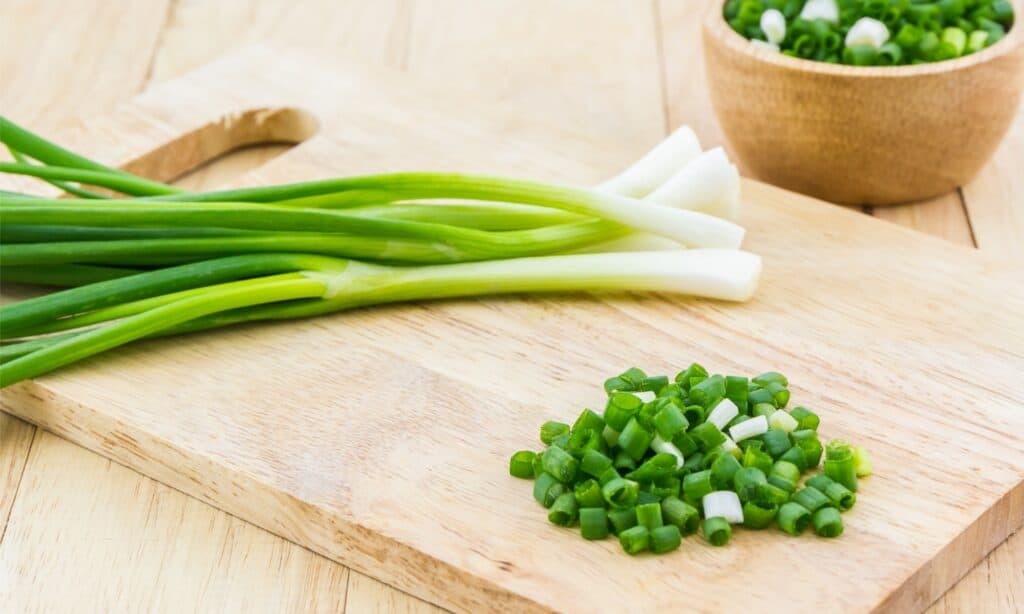
Scallions grow in fewer hardiness zones compared to chives.
©iStock.com/amnachphoto
There are a number of key differences between chives and scallions. For example, chives are smaller in both width and height compared to scallions. In addition, chives have a much more delicate flavor compared to the strong flavor of onion found in scallions. Finally, scallions grow in fewer hardiness zones compared to chives, though it depends on the specific variety of both of these plants.
Let’s talk about all of these differences in more detail now.
Chives vs Scallions: Classification
Chives and scallions are undeniably from the same family, which is the onion family. However, they are indeed different varieties from each other, and they are classified differently. For example, chives are commonly classified as Allium schoenoprasum, while scallions are commonly classified as Allium fistulosum. There are different varieties of scallions and chives, made around the world, but these are the most common types available.
Chives vs Scallions: Description
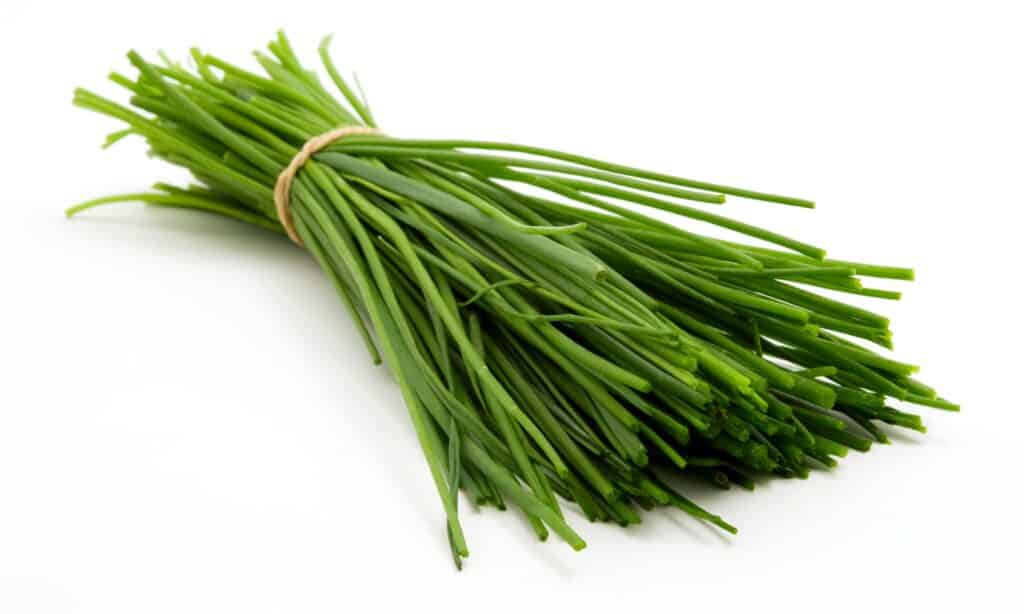
Chives look like grass and grow in unique clusters, while scallions grow on thicker stalks, with leaves branching out from a central point.
©iStock.com/only_fabrizio
It can be difficult to tell the difference between chives and scallions, but there are a few things for you to keep an eye out for while you shop for herbs or grow them in your garden. For example, chives look like grass and grow in unique clusters, while scallions grow on thicker stalks, with leaves branching out from a central point.
Both of these herbs grow like onions do, which means they grow from a centralized bulb. However, when brought to the grocery stores, chives are packaged without their bulbs more often than not, while scallions always have their bulbs attached. Many people cook with scallion bulbs, but very few people choose to cook with the root or bulb found on the chive plant.
Chives vs Scallions: Uses
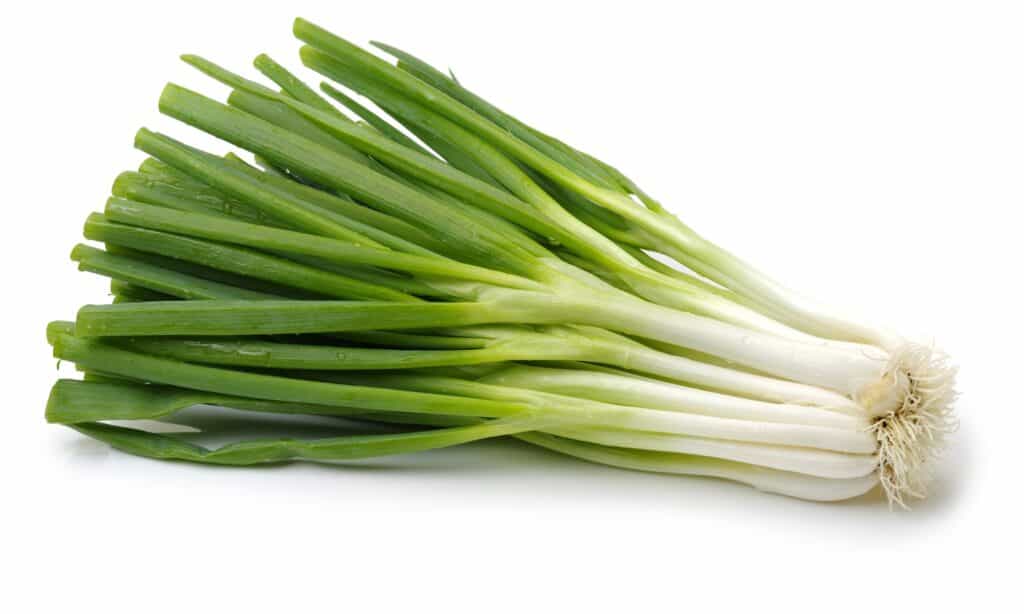
Scallions are popular in a variety of Asian cuisines, while chives are more popular in other cuisines.
©iStock.com/chengyuzheng
When it comes to cooking with scallions and chives, many people would argue that they are interchangeable in terms of their flavor and uses. However, the texture of chives makes it difficult for them to stand up to eat, while scallions are commonly used in cooking and cuisines that require them to be heated or pan fried.
Both of these herbs are used as garnishes or toppings, though chives are more commonly used for this compared to scallions. Scallions are popular in a variety of Asian cuisines, while chives are more popular in other cuisines. However, both of these options are perfect if you want to add a bit of an oniony tang to your dish!
Chives vs Scallions: Hardiness Zones
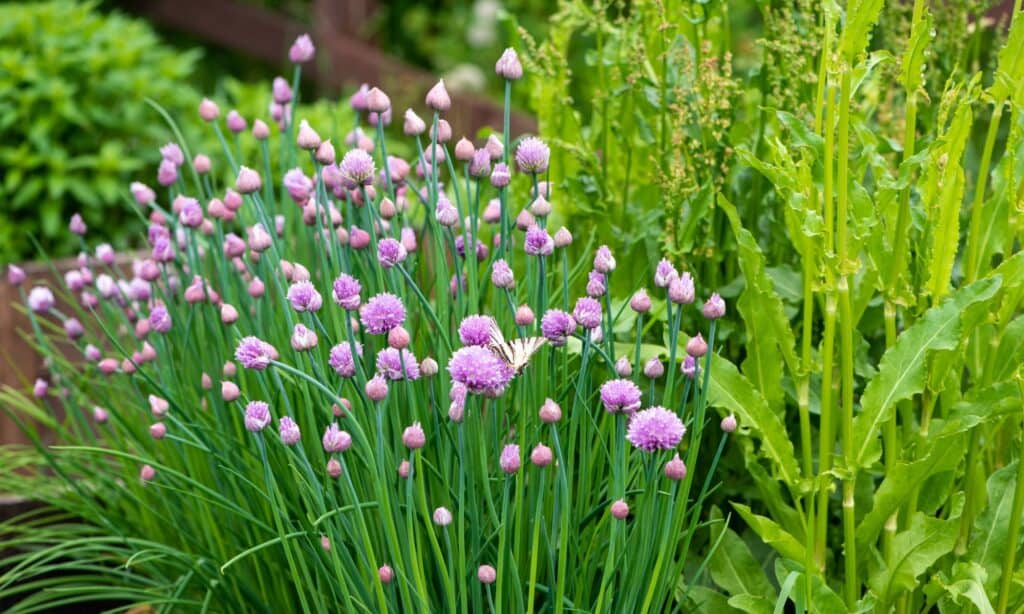
The texture of chives makes it difficult for them to stand up to eat, while scallions are commonly used in cooking and cuisines that require them to be heated or pan fried.
©iStock.com/Svetlana Monyakova
Depending on the variety, chives and scallions grow in different hardiness zones, with some overlap. For example, chives grow best in hardiness zones 3 through 9, while scallions grow best in hardiness zones 6 through 9. As you can tell, they are strikingly similar to one another, especially in the way that they grow. You can harvest chives and scallions without taking the roots, leaving the plant intact to continue producing!
Chives vs Scallions: Flavor and Texture
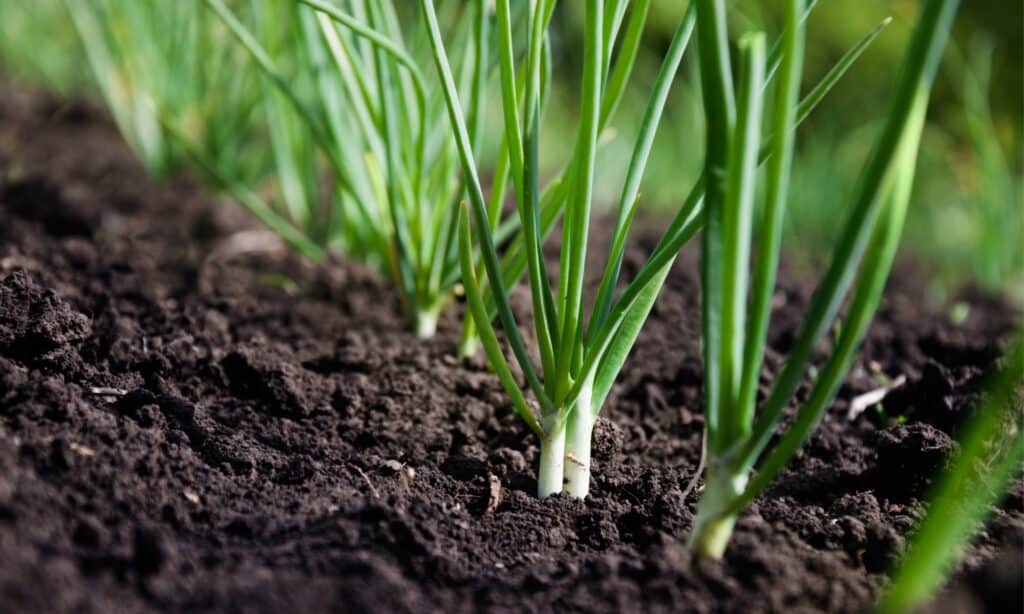
Scallions are more flavorful compared to chives, and their texture is more firm compared to the delicate texture of chives as well.
©iStock.com/Zoya2222
As we’ve already mentioned, chives and scallions have a powerful onion flavor to them. However, scallions are more flavorful compared to chives, and their texture is more firm compared to the delicate texture of chives as well. In a pinch, chives and scallions can be used interchangeably, though you should keep in mind that chives blend better with other flavors, and scallions stand out more by comparison!
The photo featured at the top of this post is © iStock.com/Zoya2222
Thank you for reading! Have some feedback for us? Contact the AZ Animals editorial team.






